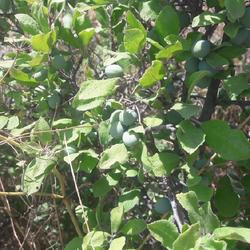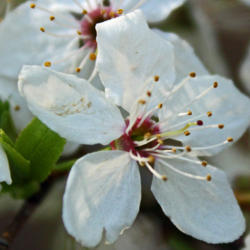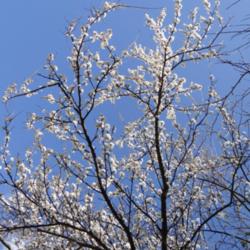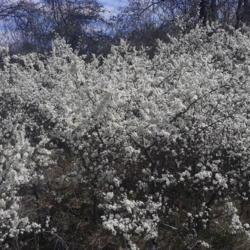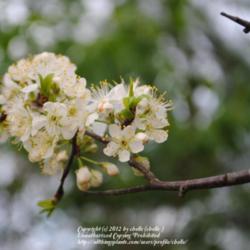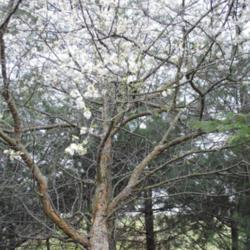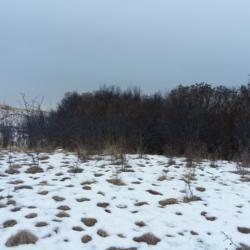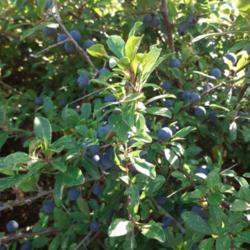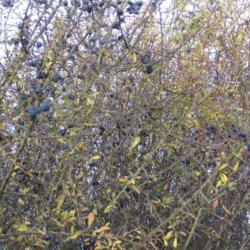| Plant Habit: | Shrub Tree |
| Life cycle: | Perennial |
| Sun Requirements: | Full Sun Full Sun to Partial Shade |
| Water Preferences: | Mesic |
| Soil pH Preferences: | Slightly acid (6.1 – 6.5) Neutral (6.6 – 7.3) Slightly alkaline (7.4 – 7.8) Moderately alkaline (7.9 – 8.4) |
| Minimum cold hardiness: | Zone 5a -28.9 °C (-20 °F) to -26.1 °C (-15 °F) |
| Maximum recommended zone: | Zone 9b |
| Plant Height: | 6 to 18 feet |
| Leaves: | Deciduous |
| Fruit: | Showy Edible to birds Other: 1/2 inch drupes are black with a bluish-purple waxy bloom. |
| Fruiting Time: | Fall |
| Flowers: | Showy |
| Flower Color: | White |
| Bloom Size: | Under 1" |
| Flower Time: | Spring |
| Uses: | Windbreak or Hedge Medicinal Herb Will Naturalize |
| Edible Parts: | Fruit |
| Eating Methods: | Cooked |
| Wildlife Attractant: | Bees Birds Butterflies |
| Resistances: | Humidity tolerant Drought tolerant Salt tolerant |
| Toxicity: | Other: Leaves and seeds contain toxins which is readily detected by the bitter taste. |
| Pollinators: | Various insects |
| Miscellaneous: | With thorns/spines/prickles/teeth Monoecious |

